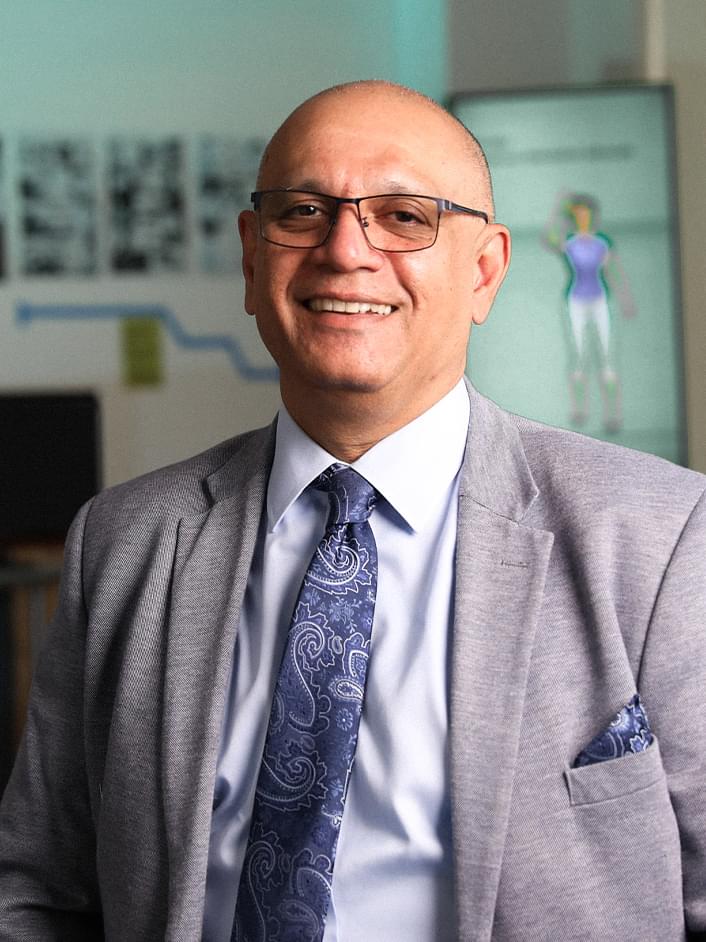Why useful innovation is designed with people in mind
When designing new technology, we need to remember that truly useful innovation addresses real human needs. Usability is important, but usefulness must be our priority.
Throughout my career leading innovation teams, I’ve seen technologies, methodologies and buzzwords come and go. One idea has stayed the same, and it’s an idea I hold true in my work every day. Human behavior should be our number one consideration when conceiving, designing and building any new solution.
Today, as humanity faces a stack of unprecedented challenges and technology evolves at an astonishing rate, empathy-first design matters more than ever. At its heart, empathy-first design is not a complicated concept. It’s simply about understanding the needs, habits and motivations – and emotions – of the people we are designing for – and moving forward with those in mind.
If we’re designing a system to make employees more productive, for example, it’s not enough to design a slick interface with a clever authentication process. We have to apply empathy. Consider the employee’s journey to work. The physical and emotional hurdles they cross between their bed and their desk every morning. The irritants that trip them up. Only then can we create an environment that helps them to succeed at – and enjoy – their work.
Going to the heart of the problem
I spent some time working with a Japanese automotive manufacturer, and I was inspired by their philosophy-led approach to going where the problem is: experiencing that problem with empathy for the worker who is facing the problem, before attempting to solve it.
I put that philosophy into practice when I designed a solution to alert automotive owners to a dangerous combination of heat and low humidity in an enclosed vehicle. By spending one scorching California day inside my car with my dog, I noticed anomalies that may never have come to my attention otherwise. I now have a patent for that solution.
It sounds obvious. After all, we are human, too, designing things for humans. We see and feel the problems. It should be second nature to consider them upfront. So why do so many organizations struggle to get it right?
Perhaps because it has never been so difficult to tune into our compassion. Thanks to the pandemic, life has changed beyond recognition. We’re more and more disconnected from other people. We miss the handshakes, the shared lunch breaks, the chances to decompress together with a coffee. In isolation for so long, our habits and outlooks have changed. We stare at screens all day, so it’s no surprise the empathy and compassion gaps are growing.
We can choose to see this moment as an opportunity. When we start designing, we can take the time to acknowledge that things have changed – and will continue to change, faster – and reset our approach.
But even before the pandemic tore chunks out of our ability to empathize, organizations often took a far too clinical approach. I’ve seen how it happens. The technology team takes a very regimented approach to building out a requirements document, ticking all the boxes but skipping the most important part. The human element is almost an afterthought, confined to a sub-section called “usability” – or, worse, it’s outsourced to the marketing team.
Usability is important, there’s no doubt. But usefulness must come first. If my bank releases a cool new app for tracking my household budget, I might admire its ambition and its functionality. But unless it genuinely fills a gap and makes life easier for me, I’m going to stick to my trusty old spreadsheet.
Channeling our passion
This brings me to a bigger point. Just because we are excited by new technology, or by an opportunity to do something new for our business, doesn’t necessarily mean the wider population will be. So much so-called innovation is ultimately useless because it’s unwanted. As an industry, we’ve got to stop forcing things on people.
The last two years in particular have seen technology loom ever larger in people’s daily lives, much of it unwelcome. People want to spend time with their family, friends and even colleagues. But too often, we force them back onto their phones or create friction by replacing perfectly adequate physical processes with yet more apps, more passwords and more distractions.
We’ve got to channel our passion for technology into experiences that enhance, rather than inhibit, the flow of daily life. And we can only do that when we genuinely connect with people’s challenges and motivations – before we fill out that requirements document.
Of course, it’s not always straightforward when we’re working for a client. Quite reasonably, the client expects a technology solution from their technology partner. They don’t want to lose time. It’s up to us to demonstrate the big-picture benefits of empathy-first design. To dig deep and challenge the brief. Are we really solving the problem here – or are we reacting to a symptom of the problem? Has the problem moved since the brief was written two (monumental) years ago? Often, we will come out of this interrogation with a completely different brief – and a much better solution as a result. This, to me, is at the core of boundless thinking.
Eye-opening results
At UST, we’ve built a model around our empathy-first approach, called Innovation Assurance. As you might expect, we begin with a thorough process to capture what people really think, feel, hear and do. We do a time-and-motion study. We apply storytelling techniques to visualize the problem from a number of perspectives using dioramas, graphic novels and creative animations. The results are always eye-opening. Once you’ve tried it, you’ll realize how much you were missing when you kicked off a project with a hastily-collated usecase document.
Empathy-first design is a mindset shift, but I truly believe anyone can do this. Get out of the solutioning box and dedicate some upfront time to understanding the problem. We are all human, after all, even those of us who spend an unhealthy amount of time obsessing about technology.
Read more about UST’s approach to experience design and explore our UX design consulting services.
Latest Articles
contact us


